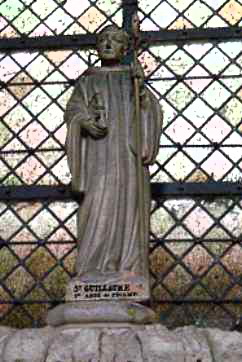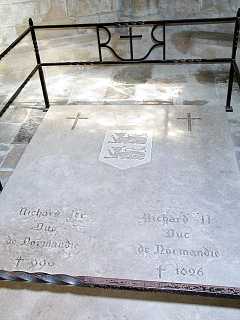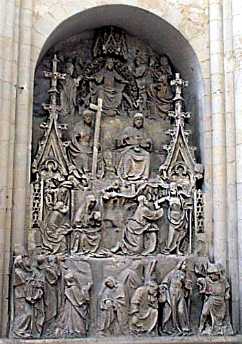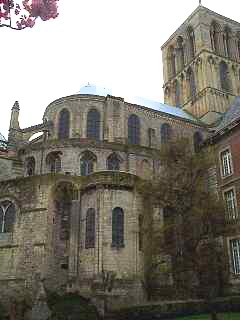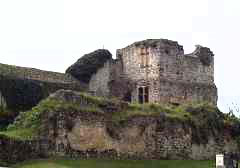There was an abbey at the
port of Fécamp as early as 662, although this was destroyed
by Viking invasions two centuries later. By 915 William Longsword,
son of Rollo, the first Duke of Normany, had chosen Fécamp
as the site of a ducal palace and church. His son, Richard I
established a new abbey there and Fécamp became a place
of miracles and saints.
In the year 1001, when
Saint William of Volpiano, the first Abbot, introduced a new
style of reformed monasticism at Fécamp, it was much admired
by the aristocracy. The Benedictine Abbey attracted immense wealth.
Its influence dominated the religious foundations of Normandy
and England until the death of William the Conqueror.
Edward the Confessor, King of England, gave several estates in Sussex to Fécamp Abbey. One of these was in Steyning. After the Conquest, when William de Braose built his castle nearby at Bramber, the monks of Fécamp accused him of encroaching on their rights. In 1086 they took their grievances to the court of William the Conqueror, who spent a whole day with his bishops and barons hearing the case. Fécamp was victorious. William de Braose was forced to make several humilliating concessions which particularly undermined the prosperity of his port and castle at Bramber. (Source: Dudley G. Cary
Elwes, in The Family of de Braose 1066-1326 (1883))
The Abbey of Fécamp
was dedicated to the Trinity. Its holy relics included the blood
of Christ and a bone from the arm of Mary Magdalene. Richard
I and Richard II, Dukes of Normandy, are buried in the Abbey
Church beneath a single marble tomb stone.
The Abbey Church displays
a wealth of religious art. It has also preserved many extravagant
chapels built by former abbots and benefactors. We had not thought
it possible for so many treasures to survive and the overall
impact of Saint Trinity's architecture and its contents is breathtaking.
The Abbey Church stands
opposite the ruins of the ducal palace.
The monks of Fécamp were once famous
for their Benedictine liqueur.
This is now produced commercially and the Palais Benedictine
at Fécamp has a range of products for sale, plus an art
gallery and museum.
|
© Lynda Denyer, Steyning,
2000 |


